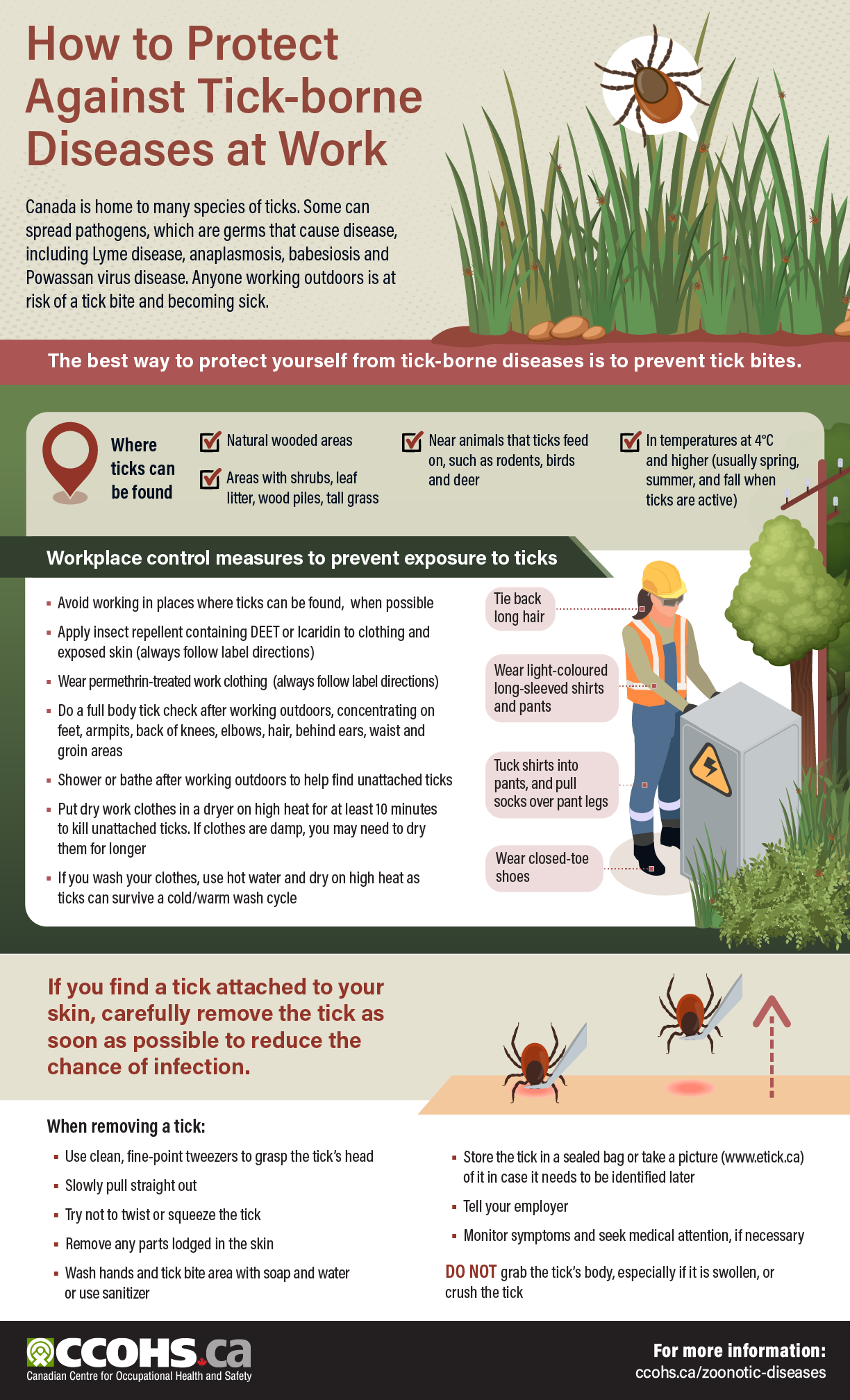How to Protect Against Tick-borne Diseases at Work
[PNG, 617 KB]

Description: How to Protect Against Tick-borne Diseases at Work
Canada is home to many species of ticks. Some can spread pathogens, which are germs that cause disease, including Lyme disease, anaplasmosis, babesiosis and Powassan virus disease. Anyone working outdoors is at risk of a tick bite and becoming sick.
The best way to protect yourself from tick-borne diseases is to prevent tick bites.
Where ticks can be found
- Natural wooded areas
- Areas with shrubs, leaflitter, wood piles, tall grass
- Near animals that ticks feed on, such as rodents, birds and deer
- In temperatures at 4°Cand higher (usually spring, summer, and fall when ticks are active)
Workplace control measures to prevent exposure to ticks
- Avoid working in places where ticks can be found, when possible
- Apply insect repellent containing DEET or Icaridin to clothing and exposed skin (always follow label directions)
- Wear permethrin-treated work clothing (always follow label directions)
- Do a full body tick check after working outdoors, concentrating on feet, armpits, back of knees, elbows, hair, behind ears, waist and groin areas
- Shower or bathe after working outdoors to help find unattached ticks
- Put dry work clothes in a dryer on high heat for at least10 minutes to kill unattached ticks. If clothes are damp, you may need to dry them for longer
- If you wash your clothes, use hot water and dry on high heat a sticks can survive a cold/warm wash cycle
- Tie back long hair
- Wear light-coloured long-sleeved shirts and pants
- Tuck shirts into pants, and pull socks over pant legs
- Wear closed-toe shoes
If you find a tick attached to your skin, carefully remove the tick as soon as possible to reduce the chance of infection.
When removing a tick:
- Use clean, fine-point tweezers to grasp the tick’s head
- Slowly pull straight out
- Try not to twist or squeeze the tick
- Remove any parts lodged in the skin
- Wash hands and tick bite area with soap and water or use sanitizer
- Store the tick in a sealed bag or take a picture (www.etick.ca)of it in case it needs to be identified later
- Tell your employer
- Monitor symptoms and seek medical attention, if necessary
- DO NOT grab the tick’s body, especially if it is swollen, or crush the tick
For more information: ccohs.ca/zoonotic-diseases
Document last updated on: 2024-03-06

